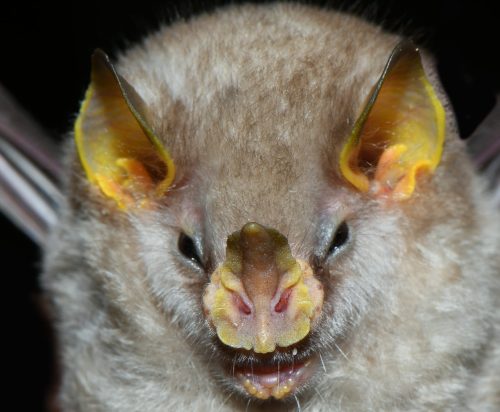Chiropterans (bats) and birds are the vertebrate groups most likely to interact with the study trees in the Life On Trees programme. Directly, since the fruit produced is undoubtedly eaten by frugivores, or indirectly, since the tree and its epiphytic plants are home to a fauna of insects that attract insectivorous animals.
Of the mammal species likely to interact with the study tree or with some of the vascular plants it is hosting, chiropterans are undoubtedly the largest group. It is obviously difficult to demonstrate an association without direct observation (unlikely with nocturnal animals), but we nevertheless thought it would be interesting to characterise the presence of these animals near the trees in the programme and in their crowns in order to obtain a picture of the fauna in their immediate vicinity.
Chiropterans were studied by setting Japanese nets for several nights at the foot of the study trees and in their canopy. Birds were observed and photographed from a platform suspended in the crowns.






